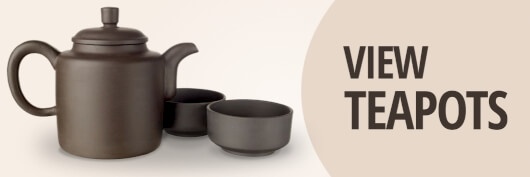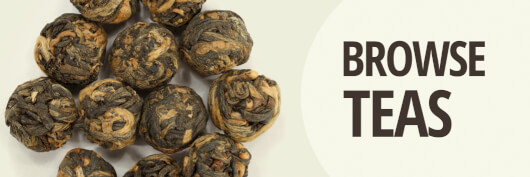Learning to Taste Tea
Humans are all born with a natural ability to detect sensations on our palate
that we call taste. As we grow we quickly learn to associate taste with the
liking or disliking of any particular sampled item. We don't necessarily have to
discern anything particular about the item as all we need to know is do we or do
we not like it. This can even produce an emotional response in reaction to our
likes and dislikes.
Tea tasters do not have the luxury of like or dislike. Their job is to analyze, evaluate and identify the character and nuances of their subjects. How do they get there? It generally takes many years to develop a taster's palate but it is easy to start.
Professional tasting is akin to listening to one instrument or a simple melody of music within a composition. Just as most people will tend to hear vocal parts of a song, as they are usually the most dominant, most people will also taste the top notes or most basic character of a tea. Listen more carefully and see if you can now hear harmonies, such as a back up singer, or listen for the drum part or base guitar. These are the elements that fill out a musical performance just like a good quality tea will have its own elements. (Hopefully, harmonious ones!)
If your tea purveyor provides a good description of the tea's character, it should provide a vocabulary for the sensations you experience as you 'listen' more deeply with your palate. Does it have citrus notes? Does it remind you of a hoppy lager? Is it crisp and fruity like a green apple? Sip and think while rolling the tea around on your mouth. Does it feel dry like a chianti or silky like coconut milk? How do all these sensations work together? In a great tea, they will harmonize in wonderful interplay, leaving you intrigued and seeking the next sip. Indeed, a great tea will always invite you back for another sip.
During this exercise at no time can you decide whether you like the tea or not. It is hard to break the habit of immediately deciding like or dislike, but it essential. Once you are able to stay neutral, you are more likely to find the nuances and define them in your mind. Also note that it helps to have other food items as flavor reference points. The more you sample and really ponder fruits, herbs and other tastes commonly found in fine tea, the more these sensations will jump out at you when you cup.
Tea tasters do not have the luxury of like or dislike. Their job is to analyze, evaluate and identify the character and nuances of their subjects. How do they get there? It generally takes many years to develop a taster's palate but it is easy to start.
Professional tasting is akin to listening to one instrument or a simple melody of music within a composition. Just as most people will tend to hear vocal parts of a song, as they are usually the most dominant, most people will also taste the top notes or most basic character of a tea. Listen more carefully and see if you can now hear harmonies, such as a back up singer, or listen for the drum part or base guitar. These are the elements that fill out a musical performance just like a good quality tea will have its own elements. (Hopefully, harmonious ones!)
If your tea purveyor provides a good description of the tea's character, it should provide a vocabulary for the sensations you experience as you 'listen' more deeply with your palate. Does it have citrus notes? Does it remind you of a hoppy lager? Is it crisp and fruity like a green apple? Sip and think while rolling the tea around on your mouth. Does it feel dry like a chianti or silky like coconut milk? How do all these sensations work together? In a great tea, they will harmonize in wonderful interplay, leaving you intrigued and seeking the next sip. Indeed, a great tea will always invite you back for another sip.
During this exercise at no time can you decide whether you like the tea or not. It is hard to break the habit of immediately deciding like or dislike, but it essential. Once you are able to stay neutral, you are more likely to find the nuances and define them in your mind. Also note that it helps to have other food items as flavor reference points. The more you sample and really ponder fruits, herbs and other tastes commonly found in fine tea, the more these sensations will jump out at you when you cup.


